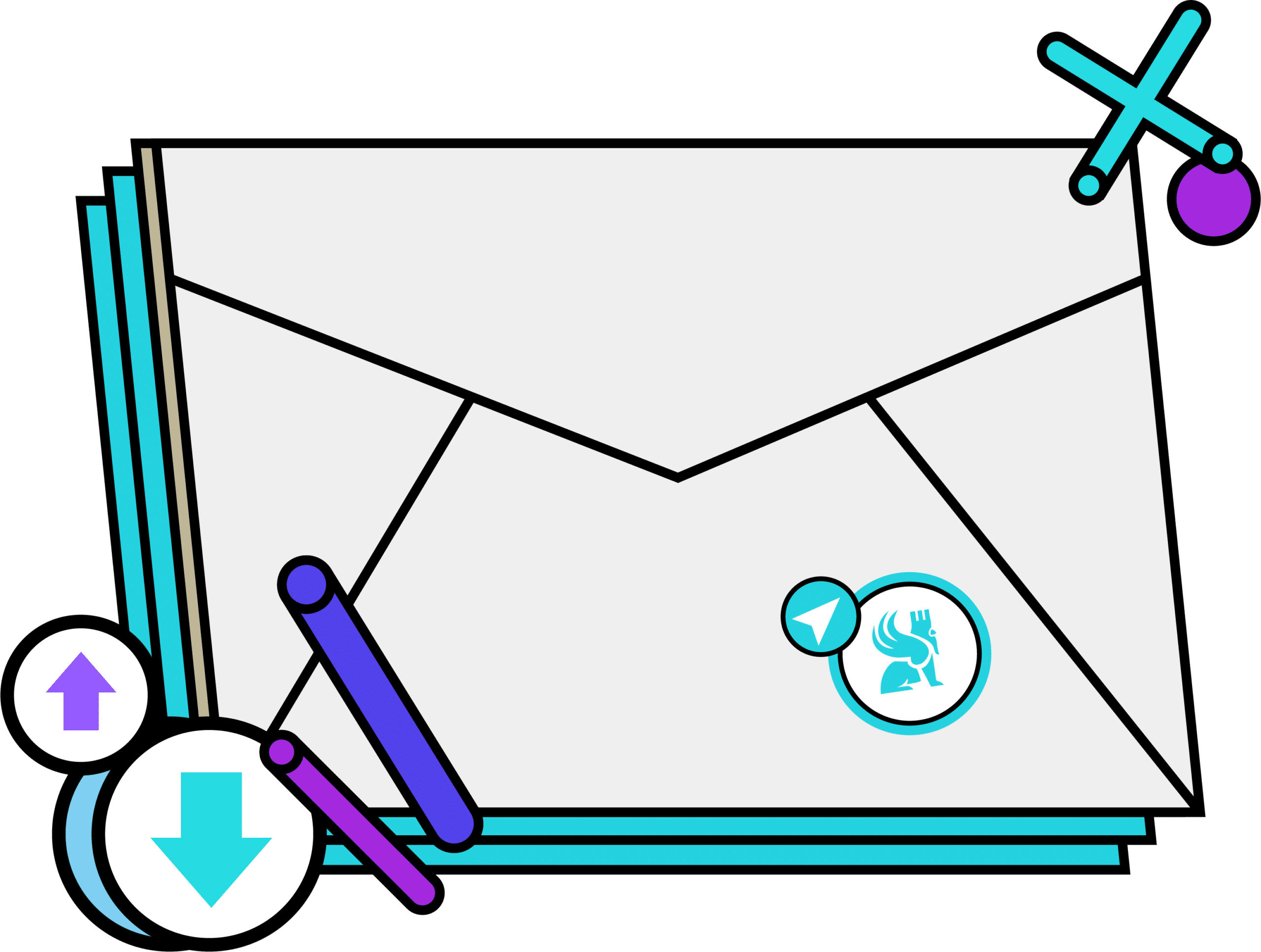Autogen is the open-source framework that Microsoft has developed to orchestrate multiple AI agents, enabling them to collaborate as a real team. Discover how it is transforming the use of generative AIs by encouraging communication between agents, integrating human involvement, and collectively tackling complex tasks!
Current artificial intelligences have a significant limitation: they often operate in isolation. Chatbots, assistants, copilots— each resides in its own silo, with its own constraints. This solitary algorithmic existence becomes a real impediment when tasks grow complex, such as coding, data analysis, or decision-making.
To address this issue, Microsoft launched an open-source framework that enables multiple AIs to collaborate like a cohesive team. Even better, these agents can interact with humans, organize themselves, assign roles, and work together to solve problems that were previously insurmountable. This framework is called Autogen.
A Platform for AI Collective Intelligence
Developed by Microsoft Research, this open-source framework orchestrates collaborative AI agents. The concept? Design systems where multiple models can engage in continuous interaction, hand-off tasks, ask questions, and self-correct— akin to a project team. It can include GPT, specialized tools, scripts, and even humans.
It’s important to clarify that Autogen does not offer another LLM, but rather an interaction infrastructure. It facilitates conversations among multiple intelligent entities, enabling them to coordinate their actions and tackle more ambitious tasks collectively than a single agent could manage alone.
Whereas single-agent assistants were traditionally built, Autogen promotes a multi-agent dialogue approach. Each agent assumes a role: a coder, a reviewer, a coordinator, a decision-maker… and everything operates seamlessly, guided by an orchestration engine that adheres to dialogic logic.
Technically, it’s open-source, written in Python, and based on LLM models accessible through APIs (OpenAI, Azure, etc.). The aim is to make the system modular, testable, and reusable in any project.

Collaboration Among AI... and With Humans
What sets Autogen apart is not merely its ability for multiple AI agents to communicate. Similar frameworks are indeed in existence. Its uniqueness lies in its structured dialogue logic, which is designed to incorporate humans into the process.
Central to the system are two types of entities: agents (autonomous, such as a specialized GPT assistant) and user proxies, which act as interfaces for human users. A user proxy acts as a developer who can jump into a conversation to validate a decision, fix a bug, or pose a new question. They can communicate directly within the interaction thread among agents.
Each agent, on its end, can be assigned a specific role: “coding a function,” “testing a module,” “reformulating an instruction,” “posing questions to the client,” and each interaction unfolds in a controlled cycle. An agent speaks, another responds, and the system evaluates whether to persist, adjust, or terminate the dialogue.
This format enables the creation of a realistic and efficient dynamic among AIs. As a result, Autogen becomes a true platform for cognitive orchestration, capable of structuring a collective reasoning that extends beyond a mere prompt.
The Architecture of Autogen Explained
The framework relies on a modular architecture, where each agent is a Python object capable of engaging in dialogue according to predefined rules. These rules encompass a personality (system prompt, style, role), a response strategy (based on an LLM or a custom function), and criteria for when to speak or not given the conversational context.
The core of the process is the cyclical conversation. An orchestrator (potentially an agent itself) manages speaking turns, oversees outcomes, and decides whether to continue or halt dialogue. This setup allows for the simulation of genuine AI work sessions, complete with iterative cycles, restarts, and arbitrations.
For instance, you might construct a loop where one agent proposes code, another agent reviews it, a third agent conducts tests, and a fourth agent determines if the code is satisfactory or requires another attempt… It’s fluid, logical, reproducible, and significantly more reliable than a single-shot prompt.
What enhances this even more is Autogen’s capability to include external tools. Agents can execute Python functions, engage with APIs, read files, and operate in a real-world environment, not solely within simulated dialogues!

Some Notable Use Cases
Autogen excels in complex scenarios where traditional AIs reach their limitations. Microsoft has notably tested it in software development contexts with striking outcomes. Imagine being able to task it with an instruction like “create a Python function to clean a dataset, then generate a correlation graph“.
Rather than attempting everything at once, and often doing so with difficulty, Autogen distributes the workload. A Data Cleaner agent writes the preprocessing code, a Debugger agent checks it line by line. Meanwhile, a Visualizer agent suggests relevant graphical outputs, and you, as a User Proxy, can pause the cycle, adjust the command, or initiate a new cycle.
This methodology enables a modular approach, fully documented, tested, and devoid of major hallucinations. It overcomes many of the significant shortcomings of traditional AIs. Another notable application is the creation of specialized agents to automate business processes. For instance, one agent collects the data, while another aggregates it.
A third compiles a daily report, and a fourth communicates with users to send everything via Slack or email. This is RPA (process automation) enhanced with generative intelligence, and it’s thoroughly customizable.
Why Does This Mark a Turning Point for Generative AI?
With Autogen, we transition from the “AI assistant” paradigm to the “AI team” model. It’s not just a change in tools, but a philosophical shift. The aim is no longer to turn an AI into a universal genius, but rather to coordinate specialized agents, each with its own expertise.
We no longer delegate a task to a solitary AI, but to an intelligent collective capable of debate, iteration, and decision-making. The focus shifts from crafting massive prompts to creating collaborative architectures that can evolve with our needs.
Moreover, Autogen introduces a degree of resilience in AI endeavors. If one agent delivers an unsatisfactory result, another can challenge it, offer an alternative, or seek clarification. This mirrors the cognitive mechanisms of human deliberation, now applied to the realm of AIs…
For companies, this offers a significant advantage. Complex tasks, like project management, automating analyses, or drafting technical documents, can be assigned to autonomous AI teams.

Autogen vs. Crew AI vs. LangChain Agents: Who Does What?
The landscape of collaborative AI agents is growing denser. Alongside Autogen, two other frameworks are emerging prominently: Crew AI and LangChain Agents. So how do you choose? And more importantly, what truly distinguishes Autogen?
Focused on productivity, Crew AI offers an highly structured approach: roles are defined (developer, reviewer, planner, etc.), “tasks” are configured, and the AI team organizes itself to reach its objective. It’s effective, but also more rigid. Every agent follows a specific plan, and the system operates entirely on a sequential workflow.
On the LangChain side, agents are designed to make real-time decisions. They’re provided with a goal, tools, and a thought process (through the ReAct framework, for example). The system is flexible and powerful, but it emphasizes “dialogue between agents” less. That’s where Autogen’s uniqueness lies: dialogue is central to its concept.
No forced sequences, no fixed logic. You configure a team of agents that can discuss, correct, contradict, and discover solutions autonomously. Essentially, Autogen doesn’t build processing chains, but authentic collective brains.
How to Test Autogen Today?
Good news: Autogen is freely available as open source, and it’s fairly straightforward to get started if you’re comfortable with Python and AI APIs. The initial step is to clone the repository. Visit the official GitHub page. Everything you need is there: documentation, example scripts, and ready-to-use code.
Next, you’ll need to set up your environment. This requires an OpenAI key (or another compatible provider), a Python environment (like virtualenv or conda), and a bit of patience to explore the examples.
It’s time to run an example. Among the demos is a collaborative coding session involving two agents, a multi-agent chatbot simulation, or even a full circle of data analysis plus visualization.
It’s concrete, instructive, and clear enough for you to quickly adapt it for your own projects. Autogen isn’t a “plug-and-play” tool akin to ChatGPT, but a framework for creators. It’s meant for those looking beyond simple prompts, for those aiming to design intelligence that thinks collaboratively.

Conclusion: Autogen - When Artificial Intelligence Collaborative Play
Autogen signifies an exciting new direction in AI: the world of collaborative AI agents that can dialogue, iterate, and coordinate like a real team. This transition from a single-agent model to collective intelligence changes the way we imagine, design, and utilize generative AIs.
For developers, businesses, or any professional eager to harness this revolution, understanding and mastering such frameworks provides a competitive edge. Being able to orchestrate multiple agents and manage intricate dialogues ensures that tasks previously undelegatable to a single AI can now be automated.
So, to dive deeper into Autogen and other advanced artificial intelligence technologies, consider exploring DataScientest. The Artificial Intelligence Engineer program offered by DataScientest immerses you in the concepts, tools, and modern methods: machine learning, deep learning, NLP, multi-agent orchestration, and more.
With a practice-focused educational approach, you will learn to design, deploy, and manage complex AI projects, from data to industrialization. Through this course, you will gain all the necessary skills to master frameworks like Autogen, and earn a recognized professional certification that boosts your appeal to employers.
Our courses are tailored to your needs, whether you prefer intensive BootCamp, apprenticeship, or ongoing training. Furthermore, DataScientest is eligible for funding via CPF or France Travail. Discover DataScientest, and accelerate your journey in AI!
Now you know all about Autogen. For further insights on related subjects, explore our comprehensive article on AI agents, our piece on LangChain, and our exploration of Crew AI!










